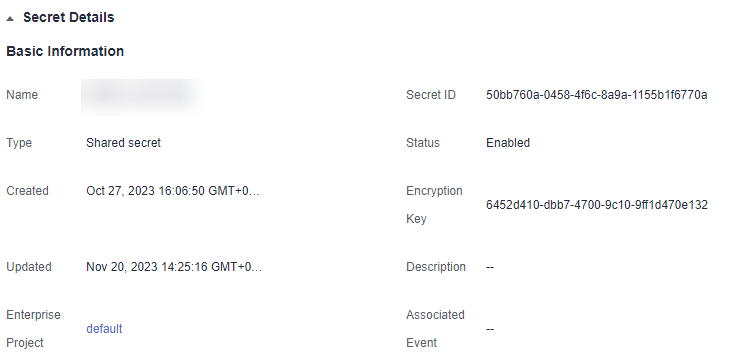Viewing a Secret
This section describes how to check secret names, statuses, and creation time on the CSMS console. The secret status can be Enabled or Pending deletion.
Procedure
- Log in to the management console.
- Click
 in the upper left corner of the management console and select a region or project.
in the upper left corner of the management console and select a region or project. - Click
 . Choose.
. Choose. - In the navigation pane, choose Cloud Secret Management Service.
- Check the secret list. For more information, see Table 1.
Figure 1 Secret list

Table 1 Secret list parameters Parameter
Description
Secret Name/ID
Secret name
Status
Status of a secret. The value can be Enabled or Pending deletion.
Type
Secret type. The value can be Shared secret.
Created
Time when the secret is created
Enterprise Project
Enterprise project that the secret is to be bound to
Operation
You can manage secrets by performing operations in the Operation column, for example, download secret backup and delete a secret.
- Click a secret to view its details, as shown in Figure 2.

- You can click Edit to modify the encryption key and description of a secret.
- You can click Refresh to refresh secret information.
Feedback
Was this page helpful?
Provide feedbackThank you very much for your feedback. We will continue working to improve the documentation.







